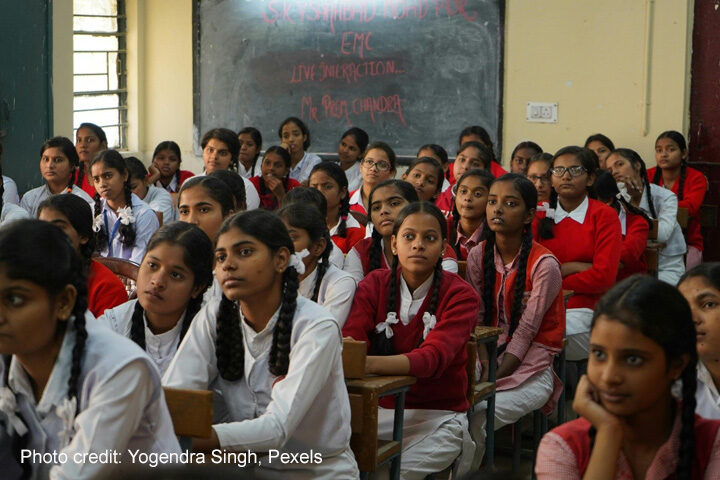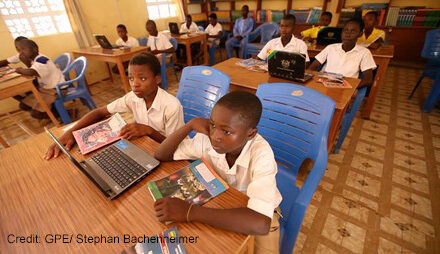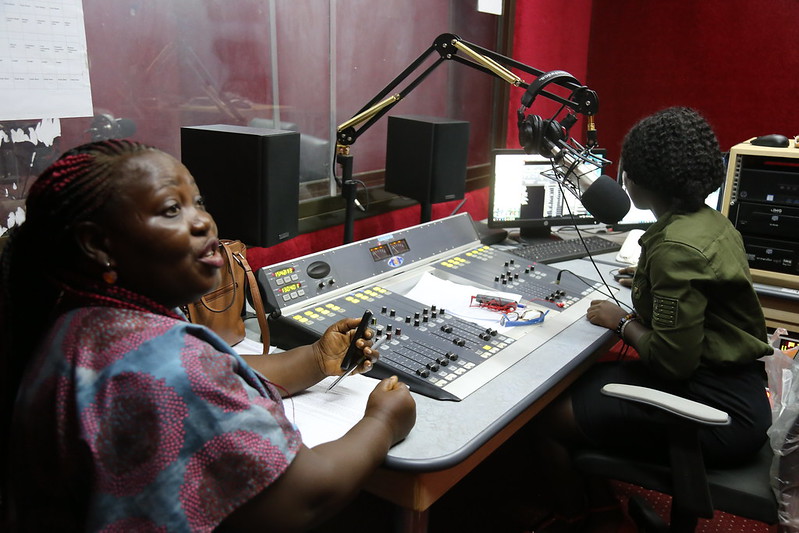This blog was written by Sarbani Chakraborty, an educational and social policy researcher based in Delhi.
The discourse of educational reform often focuses on student engagement, treating it as the unambiguous dependent variable that flows directly from effective instructional design and teacher professionalism. We rely on surveys, rubrics and metrics to affirm this linear relationship, seeking data that validates our models of pedagogical success. Yet, what if our very framework for measuring engagement masks a more volatile truth about schooling in contexts defined by systemic contradiction?
This question forces me to move beyond the data of organisational surveys and return to the affectively charged fragments of my doctoral fieldwork in Delhi’s government schools. These moments have lingered long after I departed from the ‘field’ because they refuse to fit the normative syntax of pedagogical discourse.
Among them, one particular scene stands out. It reveals a critical and uncomfortable context for understanding participation – not as the product of mastery, but as something that can, paradoxically, erupt from its very absence. It is a moment where the ethical contract between the learner and the institution is theatrically broken, transforming a mundane science lesson into a site of intellectual and moral contestation.
The scene: Disruption in the pedagogical script
The setting was a seventh-grade science classroom in a government all-girls school. A male teacher was conducting a lesson on flowers. The pedagogical script that day was not merely overlooked; it was performed verbatim from the textbook, producing a theatrical irony. The teacher did not just ‘deliver’ content; he read aloud the instructional box meant for the teacher, which contained directives such as: ‘Take students to a garden. Let them observe different kinds of flowers. Encourage tactile, sensory learning’.
An audacious and perceptive student interrupted him (in Hindi): ‘But, Sir, you haven’t taken us outside. Nor have you brought us any flowers. How are we supposed to learn this?’.
Her question – neither deferential nor rhetorical – was a rupture. The classroom stirred. Other students joined in, incensed and alive with questions. In that instant, engagement bloomed – not as a product of pedagogical mastery but as its critique.
This episode unsettles a common assumption in educational policy literature – that student engagement is always the outcome of effective teaching. What if engagement sometimes arises from contradiction – from the very failures of pedagogy to embody care, curiosity or active listening?
Within systems sustained by procedural inefficiency and bureaucratic excess, pedagogical failures often reconfigure teachers into what Krishna Kumar evocatively called ‘meek dictators’: figures who exercise constrained authority within classrooms even as they remain structurally disempowered in relation to curricular design and institutional governance. Their authoritarian stance, then, is less an expression of personal disposition than an outcome of systemic fatigue – an affective mode produced by mistrust, fractured communication, and the ritualised hierarchies that organise everyday schooling. What appears as individual inadequacy is frequently symptomatic of a deeper malaise: an institution that manages teachers through suspicion rather than solidarity, and evaluates competence through decontextualised metrics. Even limited subject knowledge in such settings is less an index of incompetence than a sign of accumulated structural neglect and the erosion of pedagogical support and confidence.
At the same time, the neglect children encounter in classrooms cannot be disentangled from the wider moral and social hierarchies that permeate the life of the school. Classrooms, far from being insulated pedagogical spaces, are microcosms of social prejudice. Within them, participation can emerge not from the cultivation of care, but from its absence: when students, emotionally and cognitively unsettled by pedagogical indifference, transform their disenchantment into critique. In such moments, engagement surfaces not as compliance with instruction, but as an ethical and intellectual provocation – a demand for recognition amid the quiet violence of neglect, rendering ‘learning’ a site of contestation.
A microcosm of symbolic-institutional violence
The teacher’s response to this sudden swell of dissent was striking in its seeming banality and casual harshness:
Tum sab gadhey ho! Section A ke bachche padhte hain. Aur tum sab phool dekhna chahte ho!’ [‘You’re all donkeys! Section A students study. You just want to look at flowers!]
Within this single utterance resided a microcosm of institutional, linguistic and symbolic violence. Affective indifference, stratified moral judgment and contempt converged. A symbolic order was inscribed between Section A and the rest – between the English-medium and the ‘vernacular’ (Hindi-medium) students. A hierarchy of learning and worth was reaffirmed, policing the boundary between discipline and dissent with practiced efficiency.
This sentence is thick with sedimented meanings of: language-based streaming, teachers’ estrangement from the very curriculum they are tasked to perform, and the fatigue that shadows reformist ideals. It gestures toward the emotional toll and repressive backlash that often accompany teaching-learning processes in Indian classrooms.
And yet, the students were, in fact, engaged – observant, critical and demanding the experiential learning prescribed by the very curriculum denied to them. They embodied qualities that contemporary educational frameworks claim to value: curiosity, critical thinking and ethical inquiry. But their dissenting participation elicited not affirmation, but scolding, shame and symbolic exile.
Reconceptualising student engagement
What, then, constitutes engagement in classrooms? Can it be read as an unambiguous indicator of teaching effectiveness? Or might it sometimes signify teacher ineffectiveness – expressed through student resistance and a demand for recognition in the face of indifference?
Across classrooms, I observed a spectrum of engagement. In some, it emerged from care-infused, co-constructed pedagogical relationships. Elsewhere, as in the episode above, engagement erupted not through intention but in defiance of neglect. It manifested through affective participation born of humiliation and denial. This ethnographic variation destabilises the linear relationship between teacher effectiveness and student engagement. It reveals a more complex terrain of affective participation, power and agency, where engagement can be reactive, resistant or reparative.
On one hand, such engagement challenges dominant discourses that equate successful participation with measurable learning gains achieved through ‘structured pedagogy’ or other instructional models. Yet, paradoxically, this very defiance – a protest demanding experiential learning – simultaneously reclaims the pedagogical ideals that policy discourse so readily venerates but rarely enacts. What appears as disruption, then, is an act of reclamation: an insistence that pedagogy live up to its own declared principles.
Conceptual and methodological implications
Regarding neglectful behavioural patterns, several students remarked in hushed tones, ‘Yeh to normal hai’ [‘This is normal’]. This likely denotes that the presumed ‘observer effect’ – the assumption that teachers modify their behaviour in the presence of a researcher – may not apply in many instances. What unfolds instead is habit: a ritualised pedagogy of disregard, rehearsed into normalcy.
Such observations call for a methodological rethinking of classroom research paradigms that rely on observational inference or presume self-monitoring. Treating teaching strategies as independent variables and student engagement as dependent outcomes risks flattening a far more complex field of pedagogical action, affect, and effect.
Engagement can be resistant or reactive; its energy is not always translated into learning gains. At times, it reiterates marginalisations with greater force. Moreover, teacher ‘effectiveness’ may often be no more than sanctioned compliance – a pedagogy that fulfils external expectations while ceasing to truly listen to the voices in its care.
As researchers, we must return, again and again, to these fragments from the field – not merely to recount them, but to reckon with the voices that erupt and yet remain unheard. To do so is to recognise the silent fall through which children slip between the cracks of institutional indifference. To attend to these silences is not only an act of methodological reflexivity but also an ethical responsibility – to listen where pedagogy has ceased to hear.
Listening beyond the metrics
The seventh-grade classroom, momentarily shattered by a student’s honest question, presents us with a critical re-definition. Engagement is not simply a desirable outcome to be measured, but a contested site of ethical pedagogical struggle. The students’ protest – their demand for a garden when offered only a script – was an attempt at reclaiming pedagogical fidelity.
But we must be careful not to romanticise this moment of defiance. While the children demonstrated remarkable agency as critique in this instance, we cannot mistake their fleeting act of rupture for systemic change. Their dissent was immediately met with symbolic violence and shaming, highlighting the crushing force of the institutional norms.
The failure rests not with the students for speaking up, or entirely with the potentially exhausted teacher, but with the system that demands compliance while eroding care. Our responsibility as educators, policymakers and researchers is to stop seeking affirmation in data points alone. Instead, we must undertake the labour of listening – listening not just to compliance, but to the resistant voices that signal where the system is failing.
When children are forced to turn their desire to learn into a fight for recognition, the silence that follows the scolding is not discipline; it is the sound of a moral-institutional failure. Only by attending to these silences – by transforming systemic suspicion into genuine support for teachers and students alike – can we hope to move beyond the ritual of neglect and build classrooms where curiosity is affirmed, not exiled.
The real lesson on flowers is that the system itself must be cultivated for growth.





